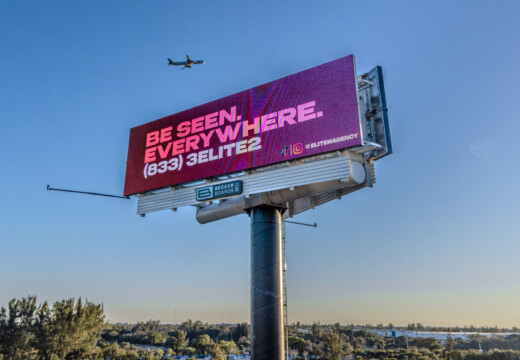Your greatest competitive edge isn’t in the features you build, it’s in how well you teach your customers to use them.
The most successful businesses don’t just hand products over and tell users to figure it out.
They teach their customers to succeed.
After all, if you give a man a fish….well, you know the saying.
Supritha Shetty knows the value of a good education. She got a great one leading growth and analytics at Meta. Now, as Head of Product at Blip, she views client education as a vital part of product strategy.
“We see education as a growth lever,” she explains. “It’s not just a way to market our product. It’s more about: How do we activate our users? How do we get them to that ‘a-ha’ moment? How do we retain them?”
The most successful leaders know education drives acquisition, engagement, and retention all at once—so they embed it into their product to make complex features accessible and intuitive to time-strapped users.
Embedded education is vital for complex products
Building a complex product means you can create sophisticated solutions that address even the most niche user needs. There’s value in complexity. But for those features to work, you have to teach people how to actually use them.
“One thing I realized about Blip from the get-go is that our product needs to educate along with delivering,” says Supritha. “For a lot of clients, out-of-home marketing is a black box. It’s not only our job to help you set up billboard campaigns. It’s our job to make OOH marketing accessible and understandable for everyone.”
When companies treat education as separate from the product experience—leaving users to figure things out across various help docs, tutorials, and support tickets—they create friction that undermines their best features.
That’s why Supritha champions embedded education, which delivers guidance in-product, right when users need it.
5 Questions to Incorporate Education in your Product
1. Where do customers abandon their workflow most frequently?
Most users don’t abandon a product because they don’t want to succeed. They abandon it because they hit complexity without guidance and are left feeling frustrated.
Support tickets and abandoned workflows can reveal exactly where your product isn’t teaching effectively. Use behavior triggers to provide just-in-time education exactly when customers need guidance.
Personalize your re-engagement messaging to make users feel heard and supported. Supritha notes that the intervention depends on where the user is in their journey. “For Blip, say you created a campaign then abandoned it. We look for opportunities to re-engage you, offering suggestions that make it simple to jump back in and finish your campaign,” she says.
Strategic principle: Start by diagnosing the most common user drop-off points, then identify what guidance you can provide at those exact moments.
2. What decisions require customers to have expertise they don’t possess?
You have expertise your users need—because you have insight into how they’re all using your product.
“At Blip, we have data on how everyone’s campaigns perform,” says Supritha. “The direction we want to take the platform is to be more proactive about using that data to make recommendations to advertisers, while still letting them be in control. The goal is to take the load off the user to set everything up.”
Defining industry-specific terms along the way is also useful. “Ad terminology–CPM, impressions, CTR, attribution—can be intimidating,” says Supritha. “We always ask: How can we simplify that?”
Strategic principle: Instead of expecting users to develop expertise, embed your own knowledge into intelligent defaults and proactive recommendations.
3. What does the “a-ha!” moment look like?
That magical moment when something just…clicks, and you realize you can actually make a piece of your vision a reality.
That’s what makes your customers stick around.
“I can throw a lot of information at you, but if you’re not taking the key steps to get to that a-ha! moment, we’re going to lose you,” says Supritha. “So the question becomes: How do we keep your interest and help you see fast, early results?”
To do this, you can:
- Explain what your user will get from taking the next step: “We see you completed steps 1 and 2. Wrap up step 3 to see…”
- Share case studies and testimonials for how businesses in your user’s vertical are succeeding
- Create mock ups to help your user visualize their final goal (for example, for Blip, this might mean mocking up billboard visuals)
Strategic principle: Leverage engagement data and customer interviews to uncover what the a-ha! moment looks like for your specific product. Then build your product roadmap around getting people to that first big win.
4. What features deliver value, but have low adoption rates?
Complex features can intimidate users when you present them all at once. Start with the essential actions, then reveal advanced capabilities when customers demonstrate readiness.
“You don’t want to overwhelm the user,” says Supritha. “It’s all about where they are in their journey. We can offer a very simplified product approach for new users, then also offer more advanced flows for advertisers, teaching them along the way.”
This progressive revelation strategy helps users get the new insights and tools they need only when they’re actually prepared to use them.
Strategic principle: Meet customers at their skill level, not at your feature set’s complexity level. Advanced users will seek out sophisticated options. New users need confidence-building wins first.
5. What external resources do customers seek while using your product?
When customers leave your platform to research best practices, that’s a teaching opportunity. Bring that external education directly into your product experience.
“At the end of the day, your users probably don’t have hours to spend researching, even if they want to learn more,” says Supritha. “For Blip’s advertisers, you could take an online course about marketing—or we could tell you, directly in the product, what we’ve seen work.”
Offer industry-specific recommendations and peer insights that help your users move forward in an informed but time-efficient way.
For example:
- Embed case studies at decisions points — “Here’s how user A approached this, here’s how user B approached it, and here are the results and considerations”
- Provide industry benchmarks and peer performance comparisons — “X% of people who take this step see Y result”
- Create contextual help that answers questions before they’re asked — “Here’s why this budget range works best for your goals, as you set up your spend”
Strategic principles: Your customers care about getting results. Show them the why behind features that help them meet their goals, not just the how.
Education at the right moment, and the right level
Today’s customers increasingly expect products to guide them to success, and companies that leave users to navigate complexity on their own risk falling behind those that embed education and support directly into the product experience. Helping your customers avoid information overload is a true differentiator in today’s crowded markets.
Over time, the most successful products will develop a three-layer education system that helps each set of customers with where they are right now:
- Onboarding education: Get users to that first “a-ha!” moment quickly, so they see the value of your product as soon as possible
- Engagement education: Show users how to optimize and improve, making expert suggestions
- Retention education: Continuously teach advanced strategies and complex features to turn new users into power users
When you give your users a product, they might use it for a day. When you teach your users how your product helps them achieve their goals, you’ve given them something even more valuable than features: expert guidance.


